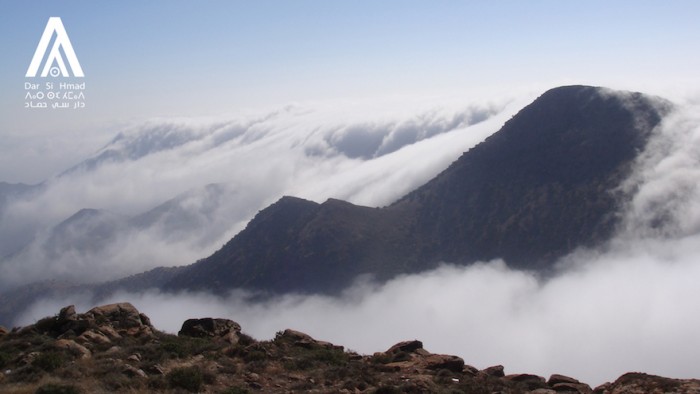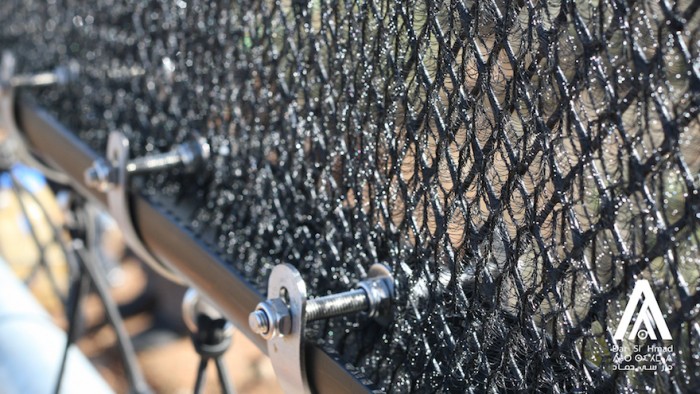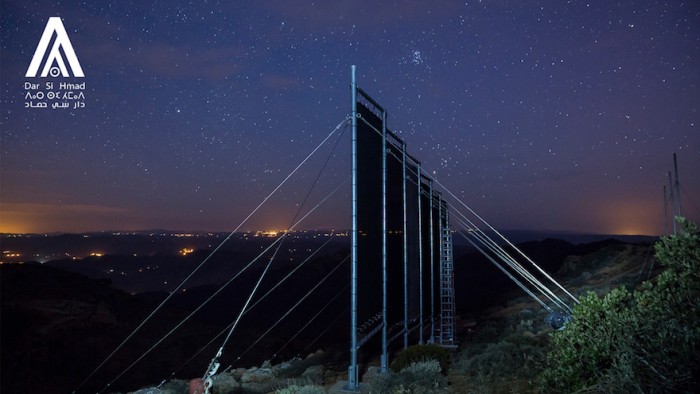Scarce water, compromised wells and climate change-induced droughts have destabilised traditional Amazigh communities in North Africa and have created heavy burdens on marginalised women who have to travel great distances to find the life-giving resource. One company hopes to tap into a solution often found in nature in order to make water more accessible in arid regions.
Created by industrial designer Peter Trautwein from Munich, the CloudFisher net claims to be the world’s most sturdy fog-harvesting structure, able to withstand wind speeds of up to 120 kilometres-per-hour. The innovative fog collector is simple to install and maintain and requires no energy. It can be used in all arid mountainous and coastal regions which have long periods of foggy weather. Per net, the device is said to harvest at most 600 litres of water per day.
The system was tested in Mount Boutmezguida in Morocco for a period of 18 months. According to CloudFisher’s website, one of its core purposes is to help women, in particular, who were devoting 3.5 hours daily to the chore of fetching water.
Morocco’s Dar Si Hmad non-profit and Germany’s The Water Foundation and Aqualonis, partnered to make the CloudFisher project a reality in Morocco.
A number of desert-dwelling animals have adapted to harvest water from fog. The Darkling beetles of the Namib Desert in the south-west coast of Africa get their water by positioning their specially adapted bodies to capture water from the air. This trait and others like it has inspired ideas such as the Dew Dank Bottle, designed to trap water within its cool steel frame, and the Fog-harvesting mesh designed by MIT.









